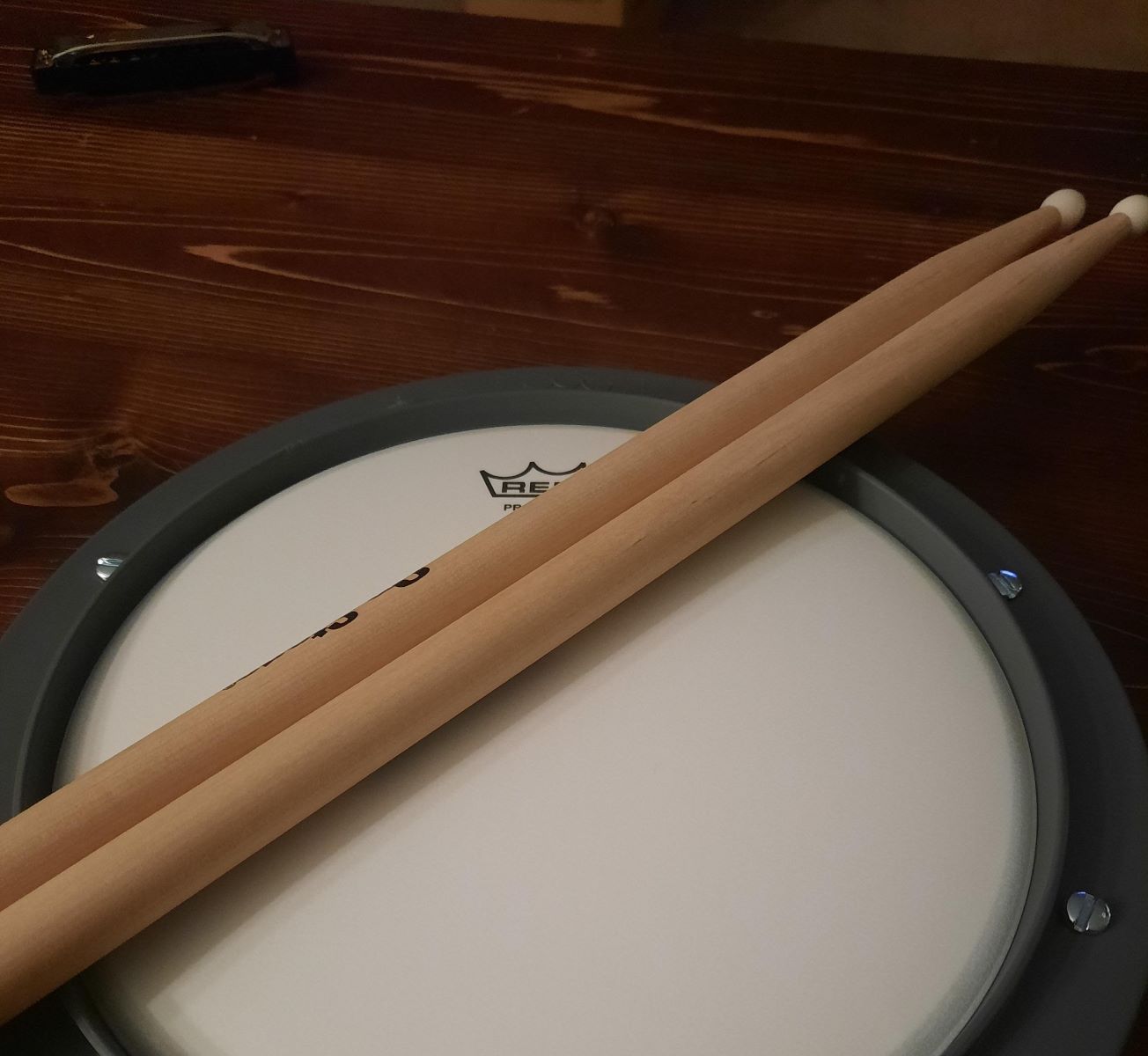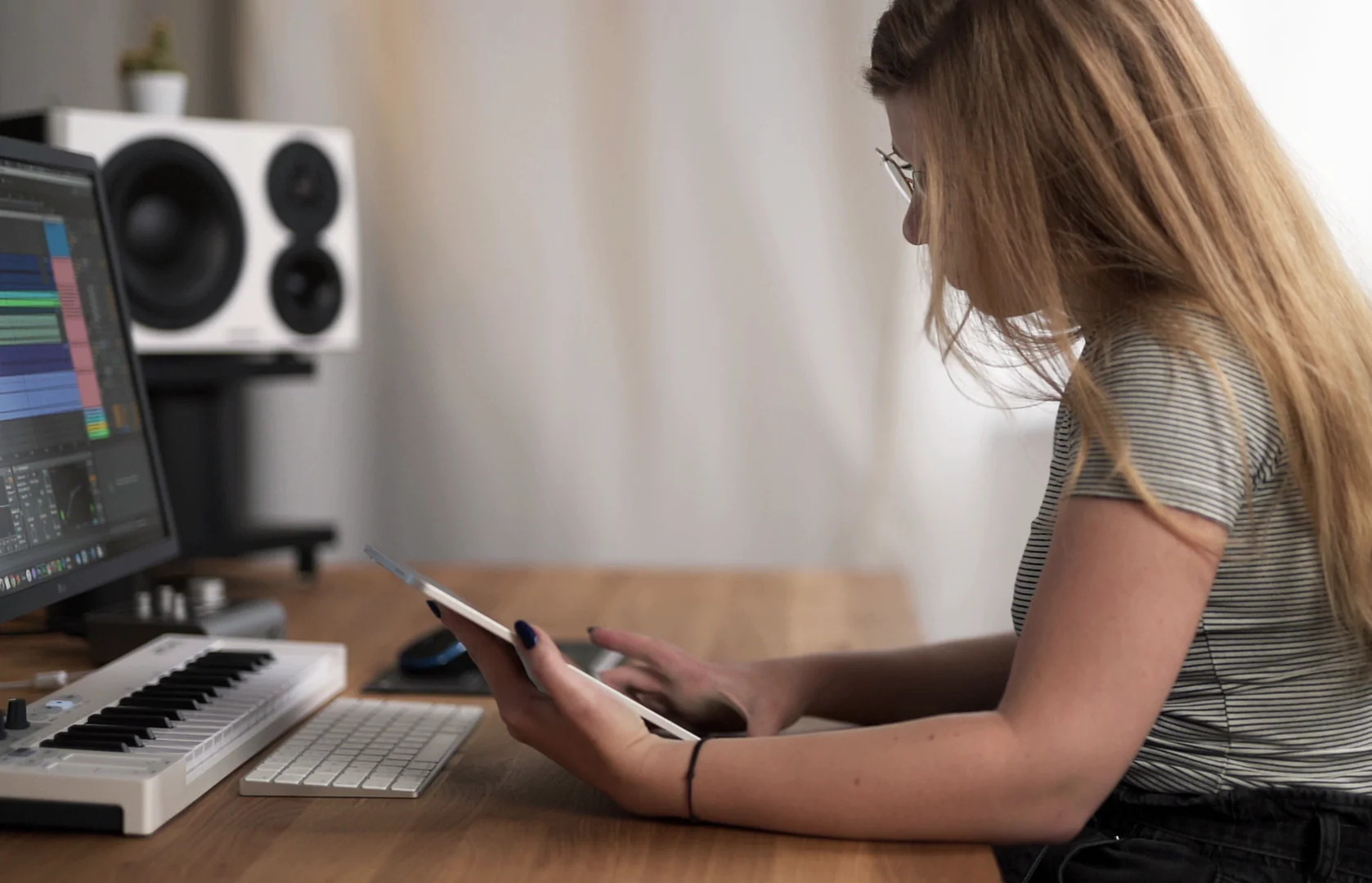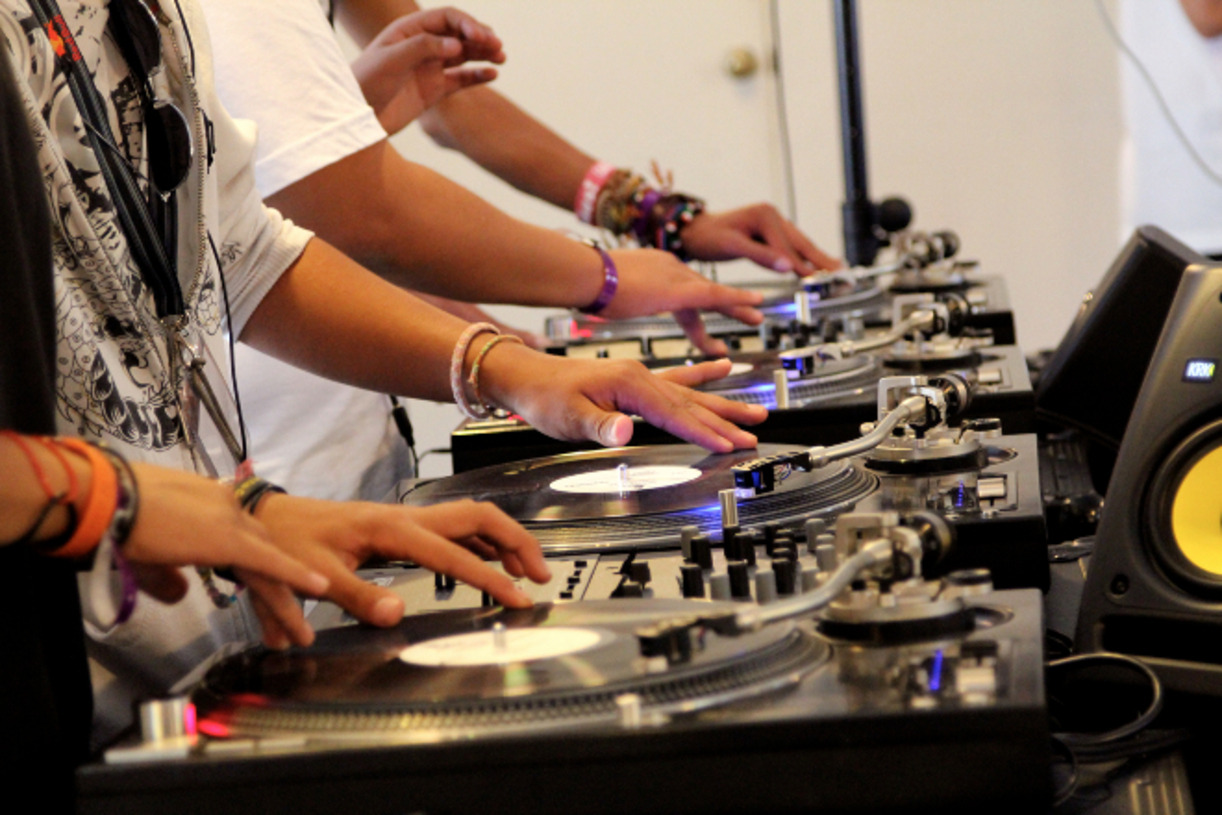Home>Instruments>Drums>How To Learn The Drums Without Drums


Drums
How To Learn The Drums Without Drums
Published: February 9, 2024
Learn how to master the drums without needing a drum set. Discover effective techniques and tips for drumming practice at home. Start your drumming journey today!
(Many of the links in this article redirect to a specific reviewed product. Your purchase of these products through affiliate links helps to generate commission for AudioLover.com, at no extra cost. Learn more)
Table of Contents
Introduction
Learning to play the drums is an exhilarating journey that can ignite a passion for rhythm and music. However, not everyone has access to a full drum set when they first embark on this musical endeavor. Fortunately, there are various creative and resourceful methods to start learning the drums without owning a traditional drum kit. Whether you're a beginner with limited space or a seasoned musician looking for alternative practice options, there are numerous effective ways to hone your drumming skills without the drums themselves. From practice pads and household items to virtual drumming apps and interactive software, the possibilities for drum education are diverse and accessible.
In this article, we will explore innovative techniques and tools that enable aspiring drummers to develop their craft without the immediate need for a complete drum set. By understanding the basics of rhythm and percussion, utilizing practice pads, repurposing household items as makeshift drums, leveraging virtual drumming apps and software, and considering the option of joining drumming classes or workshops, individuals can embark on a fulfilling drumming journey regardless of their current resources. Let's delve into these alternative approaches and discover how to learn the drums without drums.
Understanding the Basics
Before delving into the practical aspects of drumming, it’s essential to grasp the fundamental principles of rhythm and percussion. Understanding the basics of drumming involves familiarizing oneself with rhythm patterns, drum notation, and the essential techniques used in drumming. By honing rhythm awareness and internalizing foundational concepts such as tempo, time signatures, and drum rudiments, aspiring drummers can lay a solid groundwork for their musical journey.
One effective way to internalize rhythm patterns and drum notation is by utilizing educational resources such as online tutorials, books, and instructional videos. These materials can provide valuable insights into the structure of drum beats, fills, and patterns, allowing learners to comprehend and replicate them without the need for a physical drum set. Moreover, practicing rhythm exercises using hand-drumming techniques can help individuals develop a strong sense of timing and coordination, which are essential skills for any drummer.
By mastering the basics of rhythm and percussion, aspiring drummers can cultivate a deep understanding of musical timing and dynamics, setting the stage for a seamless transition to playing on a traditional drum kit in the future. This foundational knowledge forms the bedrock of drumming proficiency, empowering individuals to express themselves creatively through the art of percussion.
Using Practice Pads
Practice pads are invaluable tools for drummers of all levels, offering a convenient and quiet means of honing their skills without the need for a full drum set. These portable and noise-reducing surfaces simulate the feel of a drum, allowing individuals to practice rudiments, stick control, and dynamic techniques with precision. Whether you’re a beginner seeking to develop hand speed and dexterity or an experienced drummer aiming to refine your playing, practice pads provide an effective solution for consistent and focused practice sessions.
One of the primary benefits of practice pads is their versatility. They enable drummers to work on a wide range of techniques, including single strokes, double strokes, paradiddles, and flams, without disturbing others or requiring a dedicated practice space. Moreover, practice pads are often accompanied by educational materials and exercise routines designed to enhance drumming proficiency, making them an ideal choice for individuals looking to build a strong foundation in percussion.
Additionally, practice pads are portable, allowing drummers to practice virtually anywhere. Whether at home, in transit, or during a break at work or school, these compact practice surfaces facilitate consistent skill development. Furthermore, the use of practice pads can help drummers strengthen their wrists, improve stick rebound control, and refine their sense of timing, all of which are essential for mastering the art of drumming.
By incorporating practice pads into their practice regimen, aspiring drummers can cultivate discipline, precision, and technical proficiency, laying the groundwork for a seamless transition to playing on a traditional drum kit. This versatile and accessible tool empowers individuals to pursue their passion for drumming without the constraints of space or resources, making it an indispensable asset for drummers of all levels.
Utilizing Household Items as Drums
When traditional drums are not readily available, household items can serve as innovative substitutes for percussion instruments, offering aspiring drummers a creative and accessible means of practicing their craft. Everyday objects such as pots, pans, plastic containers, and even furniture can be repurposed as makeshift drums, providing a unique and resourceful way to explore rhythm and sound production.
One of the key advantages of utilizing household items as drums is the opportunity for experimentation and improvisation. By tapping into the diverse textures and resonances of different objects, drummers can expand their sonic palette and develop a heightened sensitivity to tone and timbre. This unconventional approach encourages individuals to think outside the box, fostering creativity and adaptability in their drumming endeavors.
Furthermore, repurposing household items as drums promotes spatial and environmental awareness, as drummers learn to adapt to varying acoustic properties and physical constraints. This adaptive mindset cultivates versatility and problem-solving skills, essential attributes for musicians seeking to thrive in diverse performance settings.
Moreover, the use of household items as drums can inspire a deeper appreciation for the rhythmic potential inherent in everyday surroundings. By incorporating found sounds into their practice routines, drummers can infuse their playing with a sense of spontaneity and organic expression, transcending the traditional boundaries of percussion instruments.
Ultimately, the practice of utilizing household items as drums underscores the resourcefulness and resilience of drummers, empowering them to pursue their passion for rhythm and music in any context. This unconventional approach not only fosters a deeper connection to the creative process but also serves as a testament to the boundless possibilities for musical exploration, even in the absence of traditional instruments.
Virtual Drumming Apps and Software
Virtual drumming apps and software have revolutionized the way aspiring drummers practice and hone their skills, offering a diverse array of features and functionalities that simulate the experience of playing a traditional drum kit. These digital tools provide an immersive and interactive platform for individuals to explore rhythm, timing, and technique, regardless of their access to physical drums.
One of the primary advantages of virtual drumming apps and software is their accessibility. With a smartphone, tablet, or computer, drummers can access a wide range of virtual drum kits, practice exercises, and instructional resources at their fingertips. This convenience enables individuals to engage in productive practice sessions anytime, anywhere, eliminating the constraints of physical space and equipment.
Moreover, virtual drumming platforms often incorporate gamified elements and progress tracking, enhancing the engagement and motivation of users. By offering interactive challenges, performance evaluations, and customizable practice routines, these digital tools empower drummers to track their progress, set goals, and receive real-time feedback on their playing, fostering a sense of achievement and continuous improvement.
Furthermore, virtual drumming apps and software provide a versatile and customizable practice environment. Users can adjust tempo, experiment with different drum kit configurations, and explore diverse musical styles and genres, expanding their repertoire and adaptability as drummers. Additionally, these digital platforms often feature recording and playback capabilities, allowing individuals to capture and review their performances, identify areas for improvement, and share their music with others.
By leveraging virtual drumming apps and software, aspiring drummers can immerse themselves in a dynamic and responsive learning experience, honing their skills and musicality with unprecedented flexibility and innovation. These digital tools not only bridge the gap between traditional drumming and modern technology but also empower individuals to pursue their passion for percussion with boundless creativity and accessibility.
Joining Drumming Classes or Workshops
For individuals seeking comprehensive guidance and personalized instruction in their drumming journey, joining drumming classes or workshops can be a transformative and enriching experience. These structured learning environments provide aspiring drummers with invaluable mentorship, communal support, and hands-on training, fostering a conducive setting for skill development and musical growth.
One of the primary benefits of joining drumming classes or workshops is the opportunity for direct interaction with experienced instructors and fellow students. This collaborative setting enables individuals to receive personalized feedback, guidance, and encouragement, nurturing a supportive community that fuels motivation and progress. Additionally, the camaraderie and shared passion for drumming within these learning environments can inspire and invigorate learners, fostering a sense of belonging and shared purpose.
Moreover, drumming classes and workshops often offer a structured curriculum that covers essential techniques, music theory, and performance skills. Through systematic instruction and hands-on practice, individuals can develop a solid foundation in drumming, honing their rhythmic precision, coordination, and musical expression under the guidance of seasoned educators.
Furthermore, these learning settings provide opportunities for collaborative music-making and ensemble playing, allowing drummers to experience the dynamics of performing in a group setting. By participating in group exercises, ensemble rehearsals, and live performances, individuals can refine their listening skills, ensemble awareness, and stage presence, preparing them for diverse musical contexts and performance opportunities.
By immersing themselves in the structured and supportive environment of drumming classes or workshops, aspiring drummers can accelerate their learning curve, expand their musical horizons, and forge lasting connections within the drumming community. These transformative learning experiences not only cultivate technical proficiency and musicality but also instill a deep appreciation for the art of drumming and the collaborative spirit of music-making.
Conclusion
Embarking on a drumming journey without immediate access to traditional drums is not only feasible but also offers a wealth of creative and innovative learning opportunities. By understanding the basics of rhythm and percussion, utilizing practice pads, repurposing household items as makeshift drums, leveraging virtual drumming apps and software, and considering the option of joining drumming classes or workshops, aspiring drummers can cultivate their skills and passion for drumming in diverse and accessible ways.
Through the exploration of rhythm, technique, and musical expression, individuals can lay a strong foundation for their drumming endeavors, fostering creativity, adaptability, and resilience in their approach to percussion. The diverse methods and tools available for learning the drums without drums underscore the boundless possibilities for musical exploration and skill development, transcending the limitations of resources and space.
Ultimately, the journey of learning the drums without drums is a testament to the resourcefulness, dedication, and passion of drummers worldwide. Whether through the rhythmic exploration of household items, the immersive experience of virtual drumming, or the communal support of drumming classes and workshops, individuals can embark on a fulfilling and transformative drumming journey, driven by their love for rhythm and music.
Aspiring drummers are encouraged to embrace these alternative approaches with an open mind and a spirit of curiosity, recognizing that the essence of drumming lies in the creative expression and rhythmic connection that transcends the physical constraints of traditional instruments. By embracing ingenuity, adaptability, and a deep appreciation for rhythm, individuals can embark on a fulfilling drumming journey, enriching their musicality and creativity along the way.











